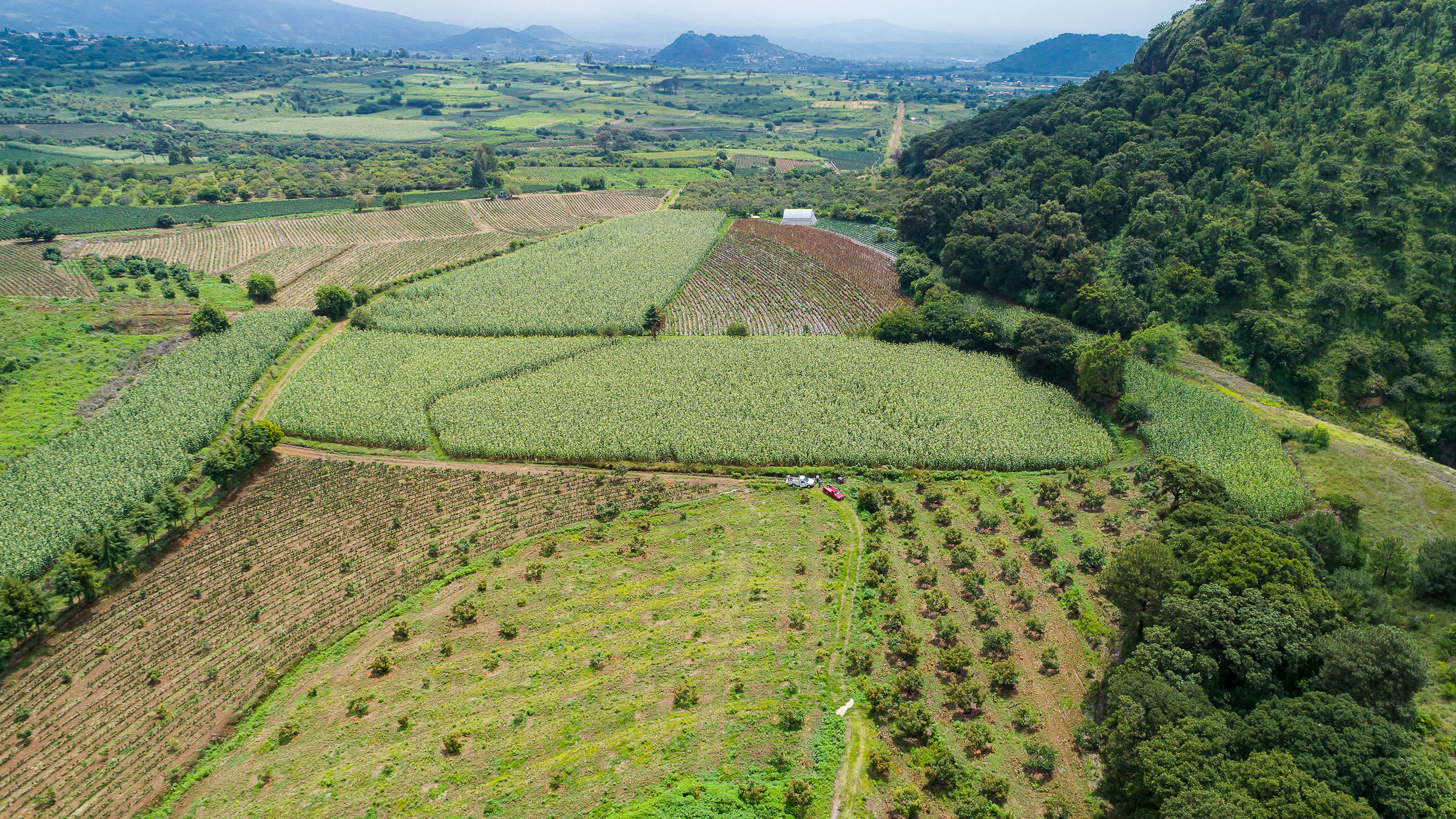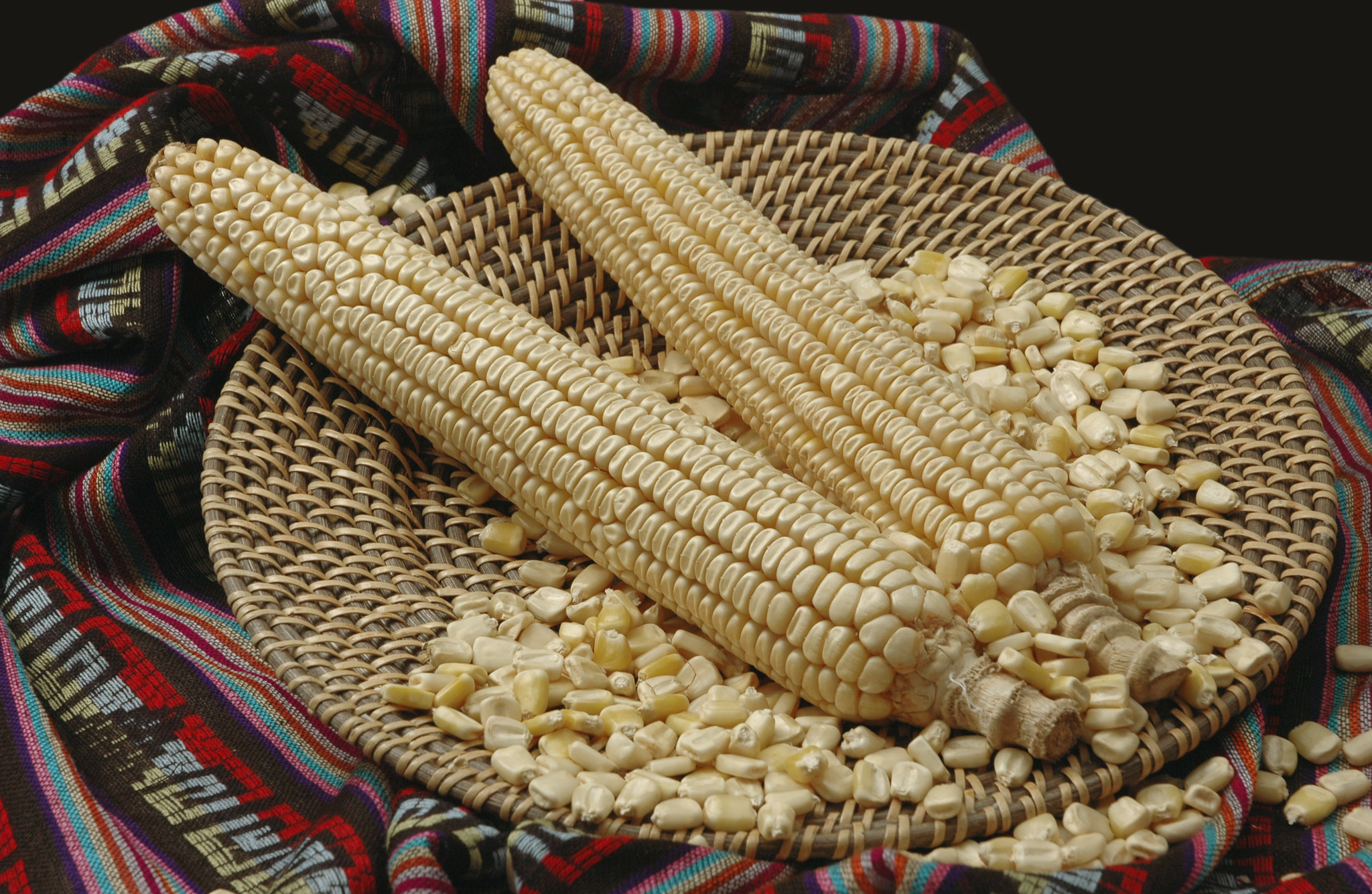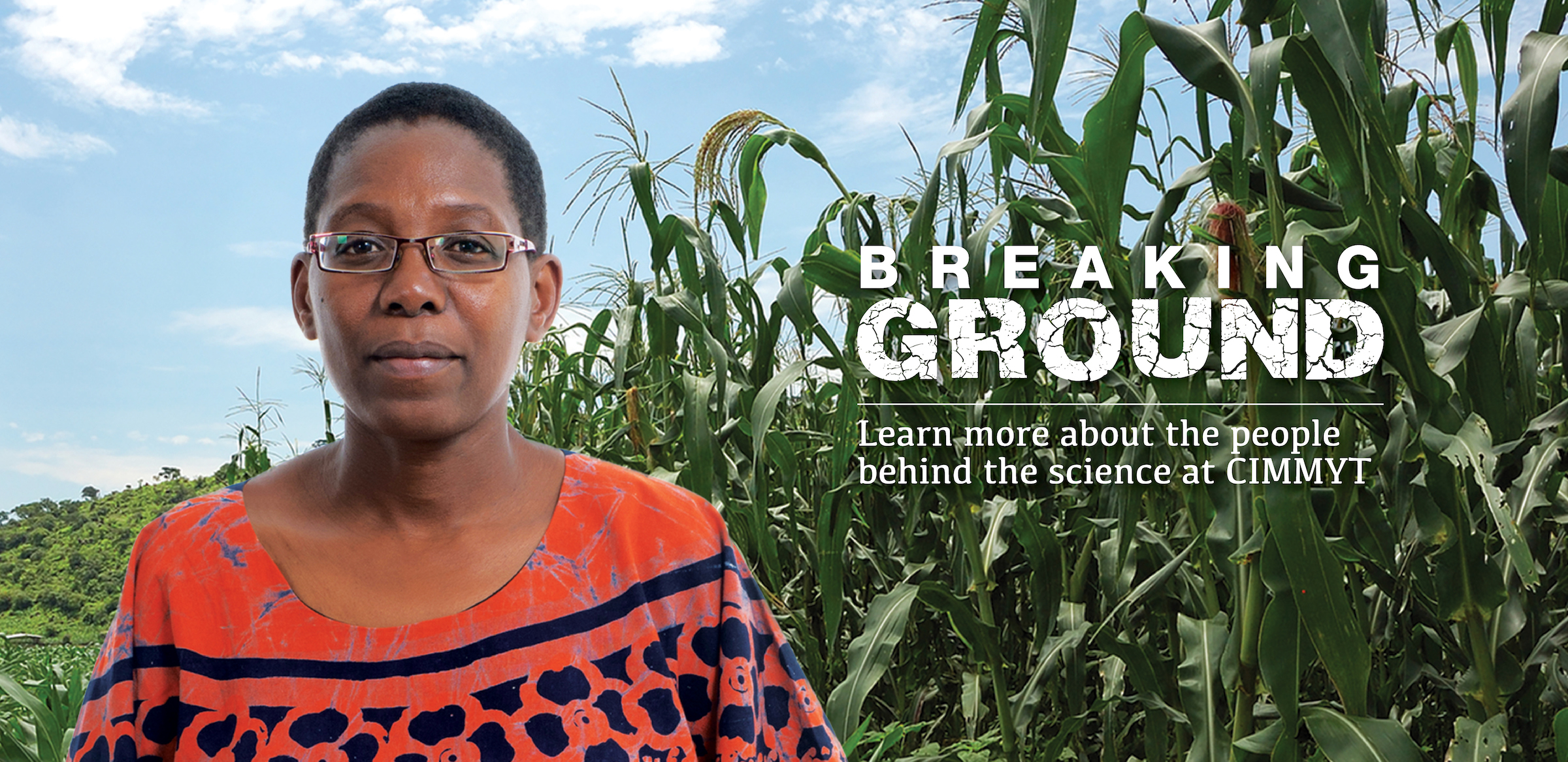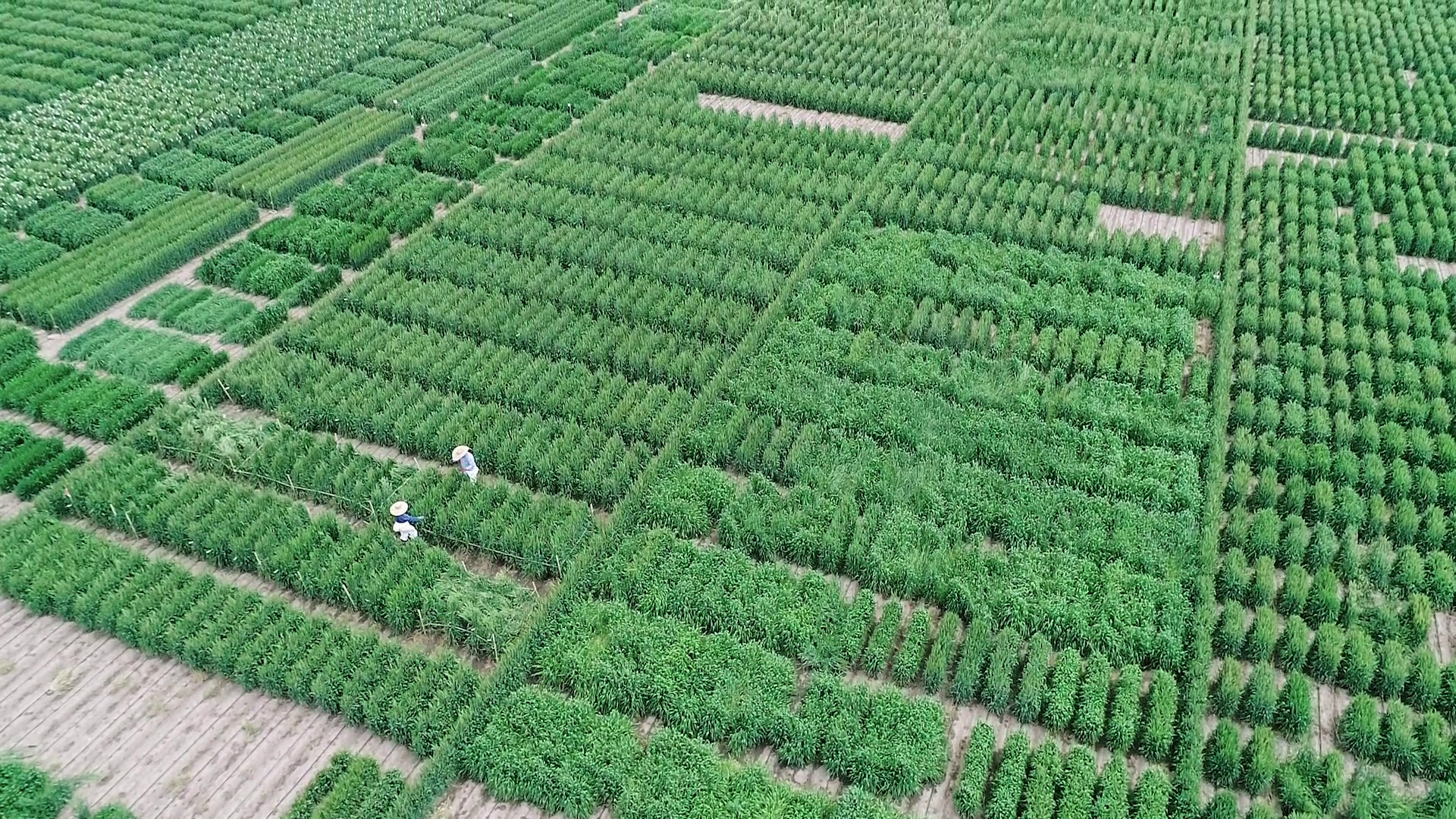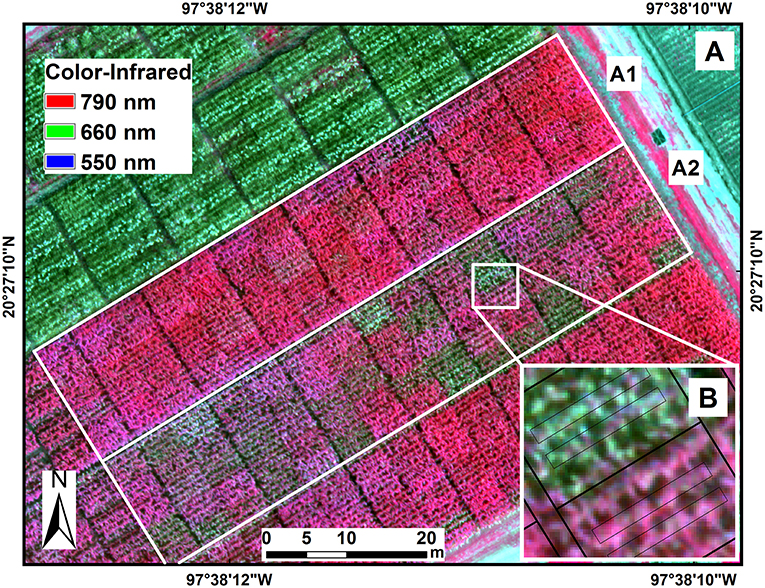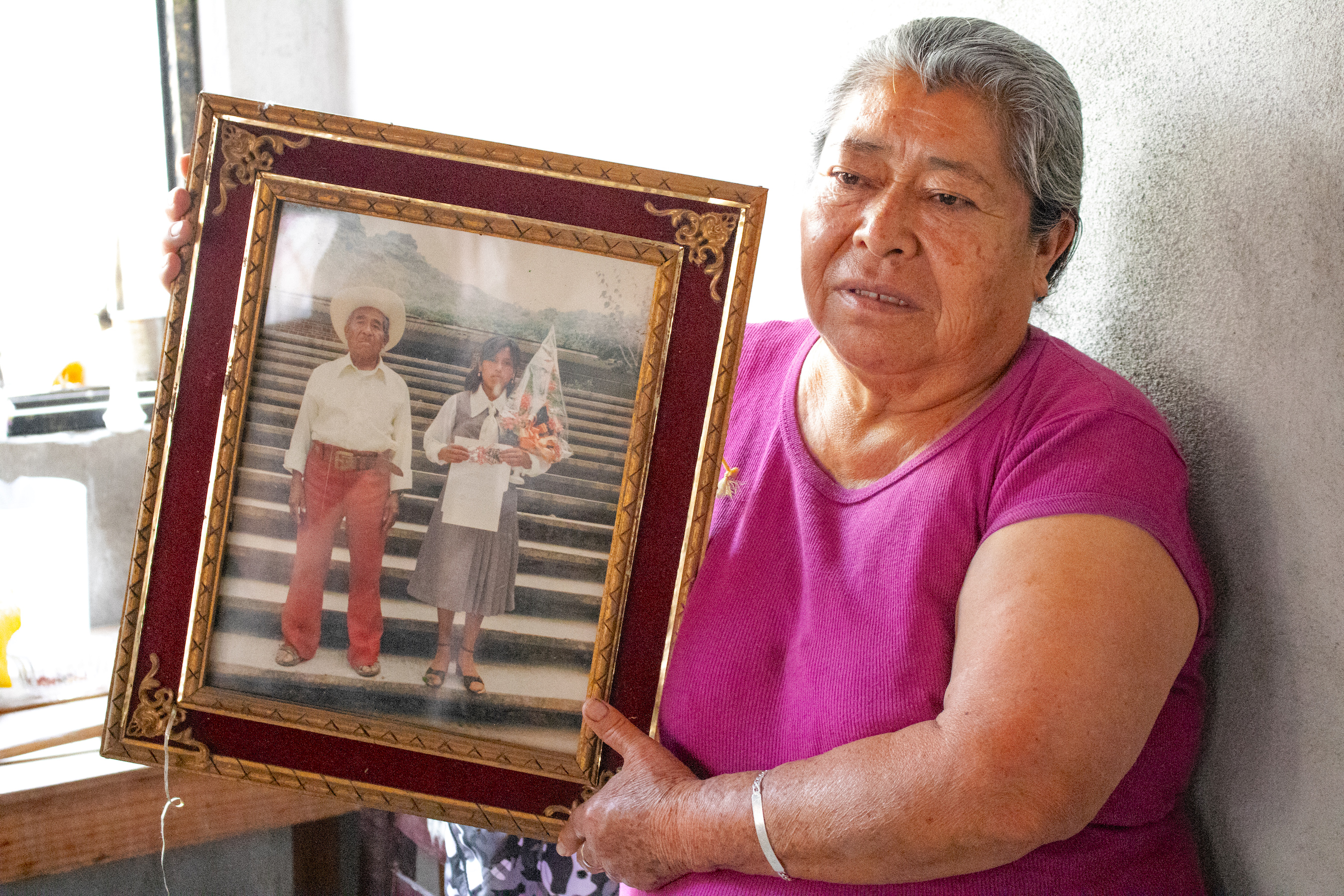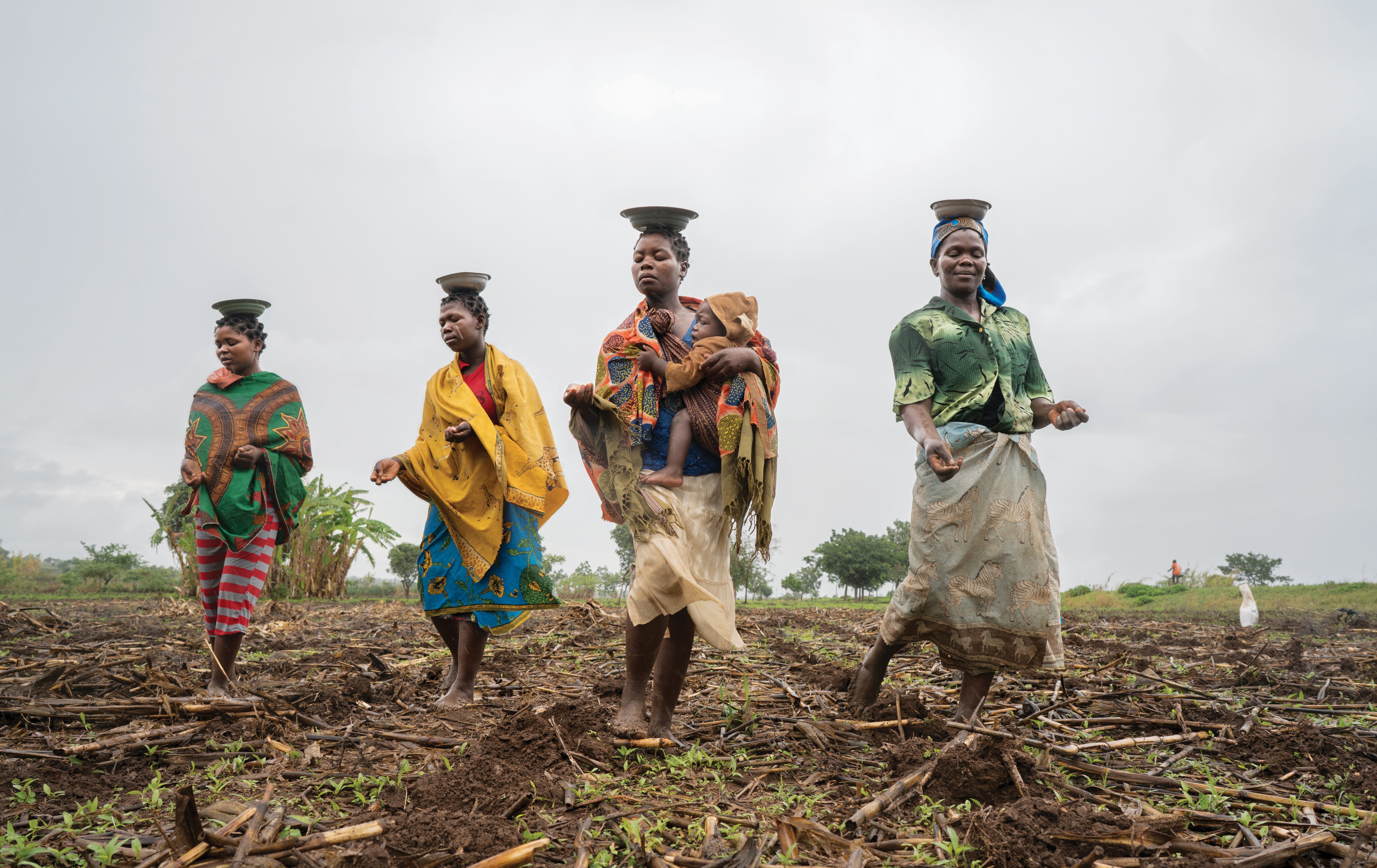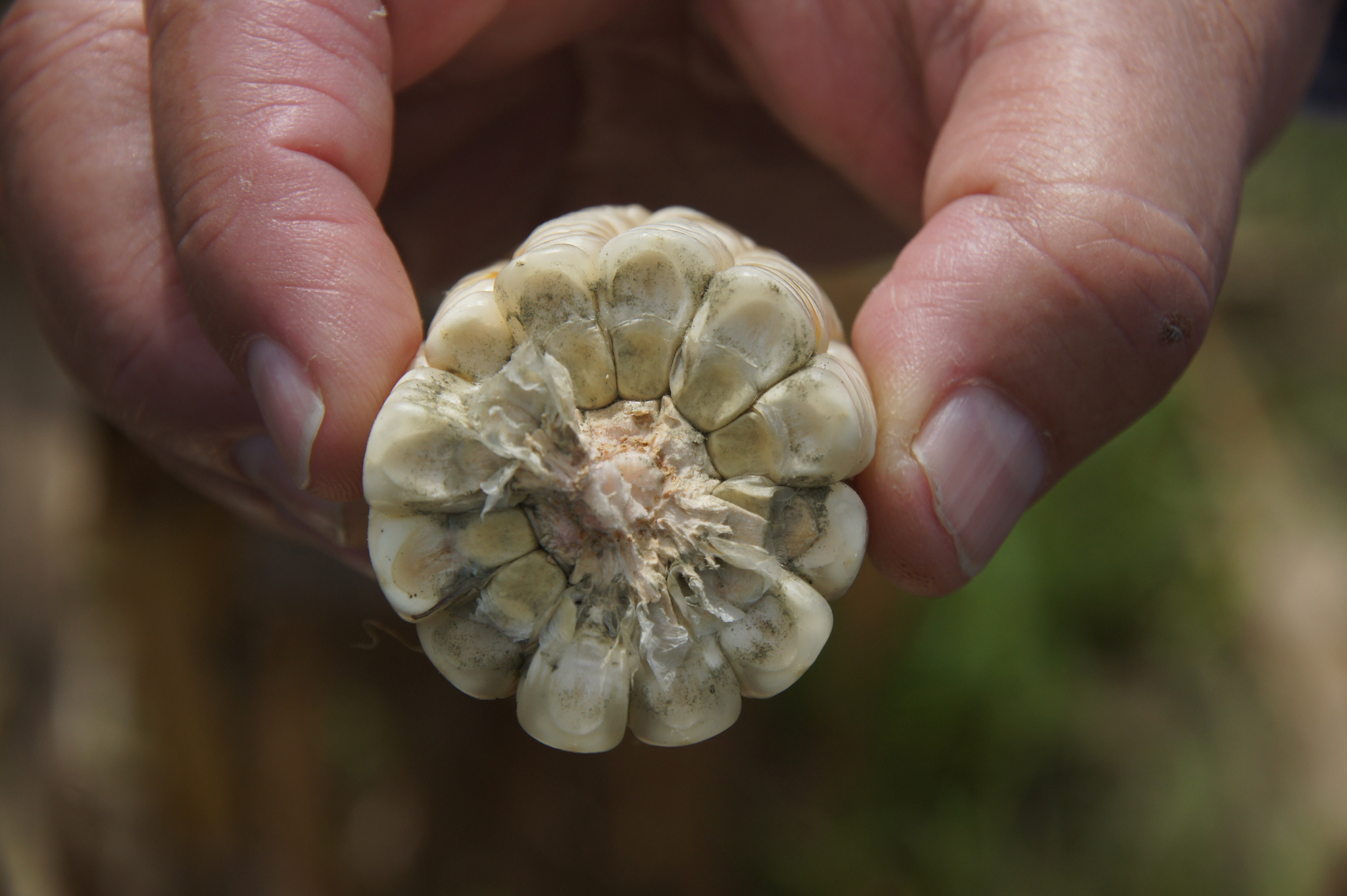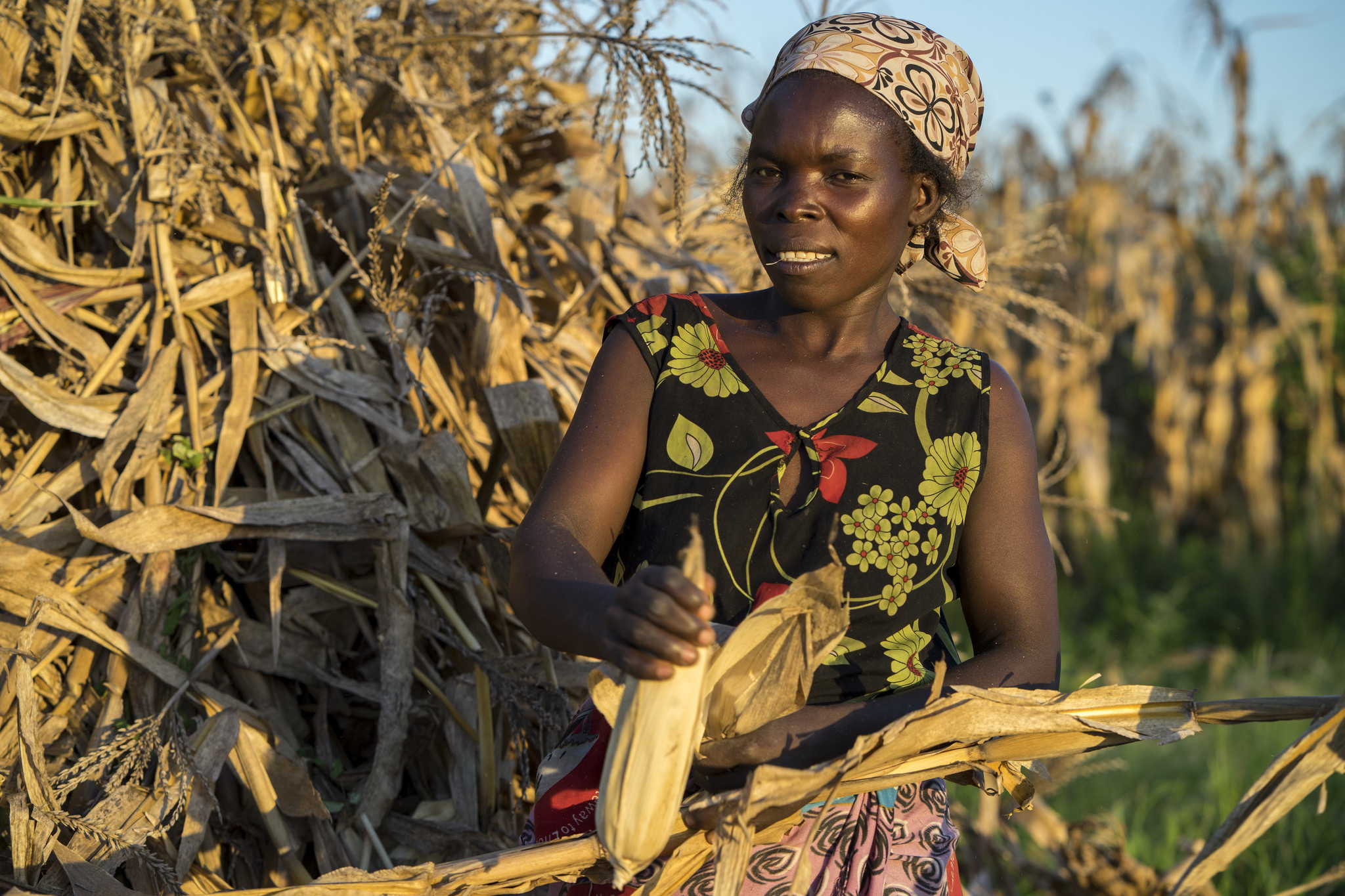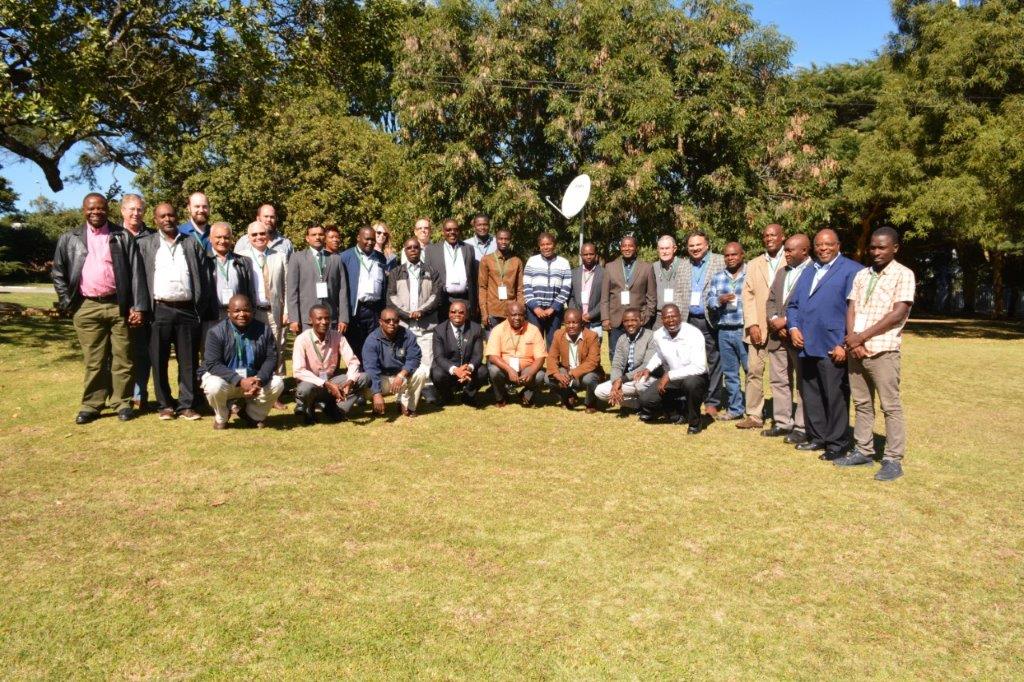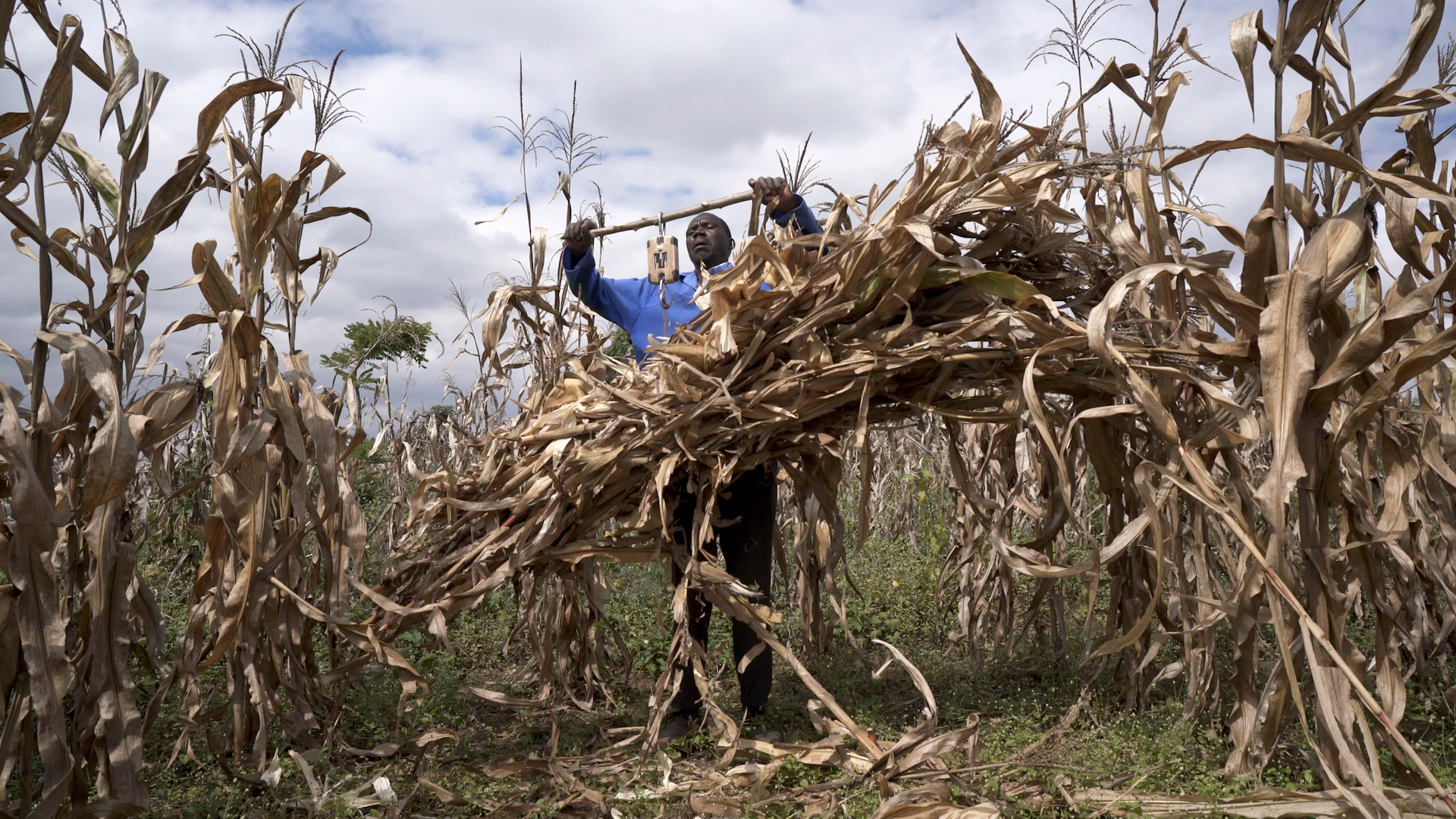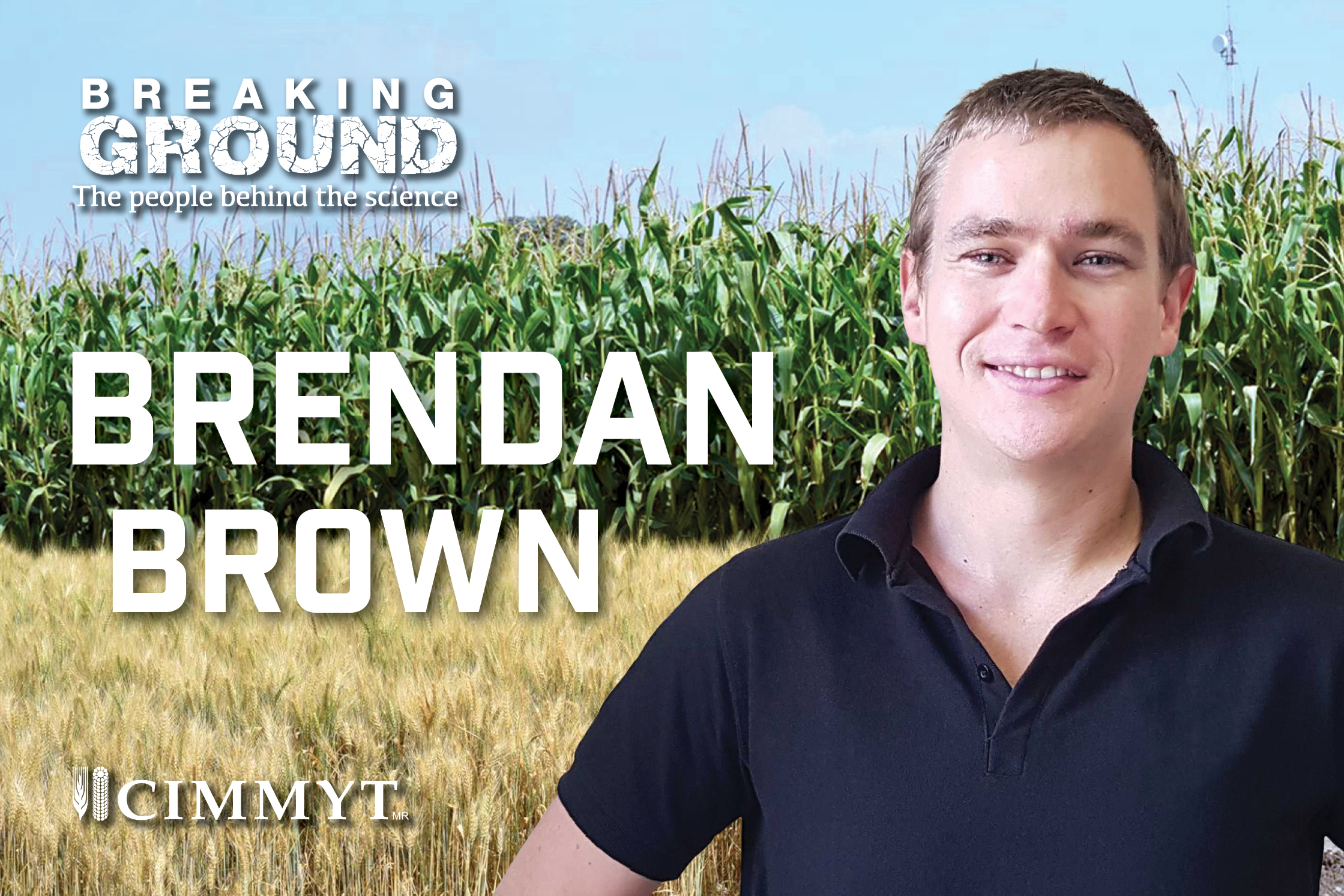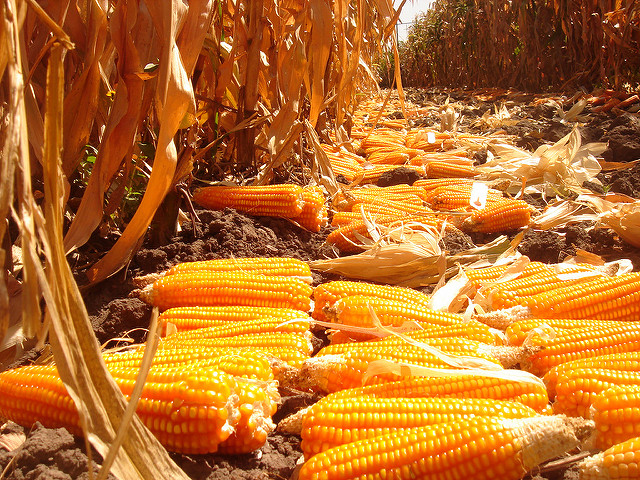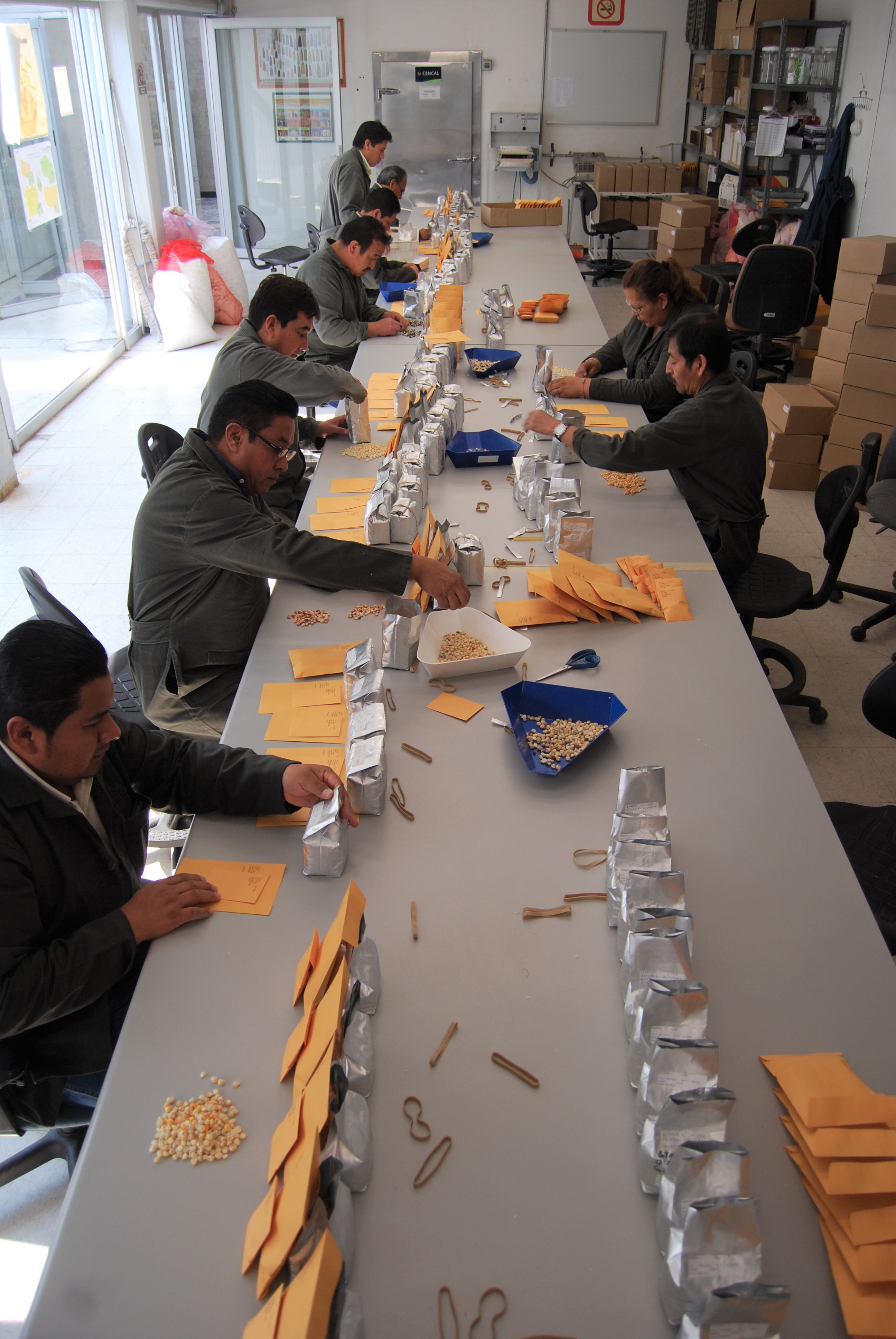Bringing landraces back home, 50 years later
 Nutrition, health and food security
Nutrition, health and food security
Half a century earlier, scientists collected and preserved samples of maize landraces in Morelos, Mexico. Now, descendants of those farmers were able to get back their ancestral maize seeds and, with them, a piece of their family history.
Saving the giant
 Nutrition, health and food security
Nutrition, health and food security
CIMMYT scientists engage to preserve the Jala maize landrace, famous for producing the longest maize ears in the world.
New manual provides quantitative approach to drought stress phenotyping
 Innovations
Innovations
The manual covers field site selection, effects of weather, crop management and other factors to standardize the required intensity, timing and uniformity of imposed drought stress during field trials.
Breaking Ground: Munyaradzi Mutenje tailors innovations to farmers needs
 Gender equality, youth and social inclusion
Gender equality, youth and social inclusion
Mutenje opens dialogue with farmers to design new interventions that target farmers’ needs and achieve positive impact.
Experimental stations in Mexico improve global agriculture
 Capacity development
Capacity development
CIMMYT’s five agricultural research stations in Mexico are instrumental for researchers’ work to develop innovative crops and sustainable farming systems worldwide.
Bird’s-eye view
 Innovations
Innovations
Multispectral and thermal images taken by cameras on unmanned aerial vehicles are helping researchers to monitor the resistance of maize to tar spot complex and other foliar diseases.
Tracing maize landraces, 50 years later
 Environmental health and biodiversity
Environmental health and biodiversity
Scientists track down the families in Morelos, Mexico, who donated maize landraces to CIMMYT in 1966-67. Would they still be cultivating them?
Book launch: Lead farmers in eastern and southern Africa
 Climate adaptation and mitigation
Climate adaptation and mitigation
A new book draws on experiences of men and women farmers across eastern and southern Africa who bravely embraced change to improve their farming methods and the lives and livelihoods of their families.
New publications: Biofortification of maize with provitamin A can reduce aflatoxin load
 Nutrition, health and food security
Nutrition, health and food security
This research is especially significant for countries where the health burdens of exposure to aflatoxin and prevalence of vitamin A deficiency converge with high rates of maize consumption.
How gender equity and social inclusion are improving the lives of rural families in Africa
 Gender equality, youth and social inclusion
Gender equality, youth and social inclusion
Women have the potential to be drivers of agricultural transformation.
International Maize Improvement Consortium for Africa ramps up seed innovations
 Capacity development
Capacity development
CIMMYT launched the consortiumin May 2018, to better engage with a committed set of partners and to achieve enhanced maize yields in Africa.
Farmers and scientists celebrate SIMLESA achievements
Over 230,000 farmers have adopted sustainable intensification technologies and the project has helped nurture future scientists.
Breaking Ground: Brendan Brown brings research to small-scale farmers
 Nutrition, health and food security
Nutrition, health and food security
Brown’s studies allowed him to develop novel mixed methods and participatory impact pathways to promote new farming practices, such as conservation agriculture, to smallholder farmers in Africa.
Reflections on the global impact of biofortification
 Nutrition, health and food security
Nutrition, health and food security
There are now 290 new varieties of 12 biofortified crops – including maize, wheat and potatoes – being grown in 60 countries, reaching an estimated 10 million farming households.
CIMMYT recognized for support in restoring Guatemalan seed systems after hurricane
 Nutrition, health and food security
Nutrition, health and food security
The seed varieties stored in the CIMMYT germplasm bank were of vital importance in efforts to restore food security in the aftermath of Hurricane Stan.
